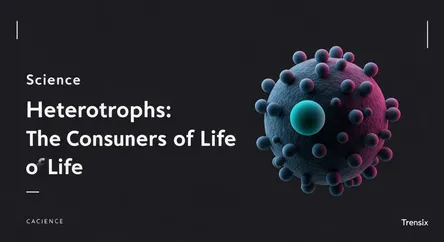Science
Heterotrophs: The Consumers of Life

Discover heterotrophs, organisms that can't produce their own food and must consume other life forms to get energy. Learn their vital role.
What is it?
A heterotroph is an organism that cannot manufacture its own food by carbon fixation and therefore derives its intake of nutrition from other sources of organic carbon, mainly plant or animal matter. In the food chain, heterotrophs are secondary and tertiary consumers. Unlike autotrophs like plants, which produce their own food via photosynthesis, heterotrophs must eat other organisms to survive. All animals, fungi, and numerous protists and bacteria are heterotrophs. They are the consumers of the ecosystem, breaking down complex organic compounds to release energy.
Why is it trending?
The concept of the heterotroph is a cornerstone of biology and ecology, frequently trending in educational contexts and discussions about ecosystem dynamics. As interest in sustainability, food webs, and the impact of climate change grows, understanding the role of consumers becomes increasingly vital. The term surfaces in research on nutrient cycling, biodiversity loss, and even in the development of new biotechnologies that utilize heterotrophic microorganisms for industrial processes, keeping it relevant in scientific communities.
How does it affect people?
Humans are prime examples of heterotrophs. Our survival is entirely dependent on consuming other organisms, whether they are plants (autotrophs) or other animals (heterotrophs). This fundamental biological classification dictates our agricultural systems, dietary needs, and metabolic processes. Understanding our heterotrophic nature is key to nutrition science, managing global food security, and appreciating our deep-seated connection to the planet's ecosystems. It underscores our role as consumers within the intricate web of life and highlights our reliance on the health of producers and other consumers.